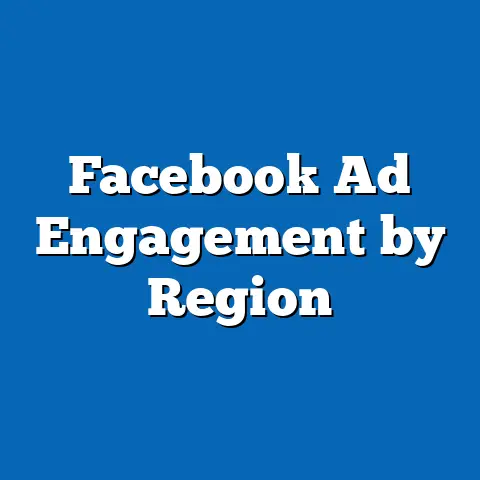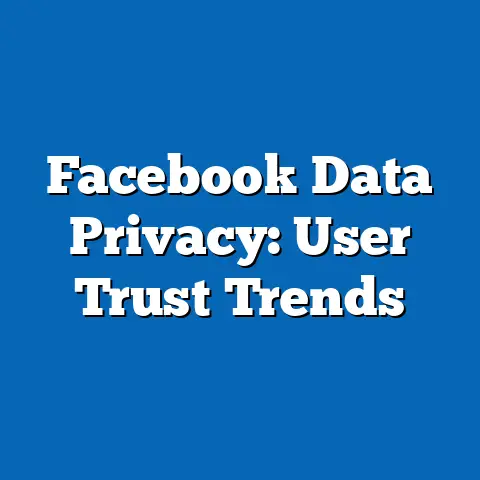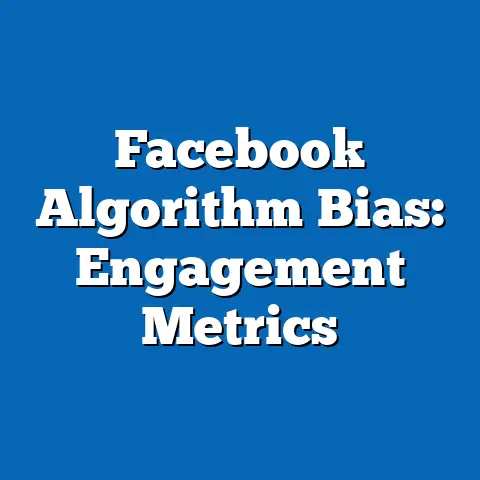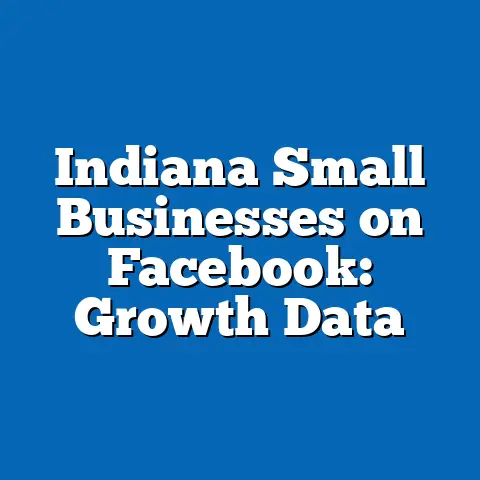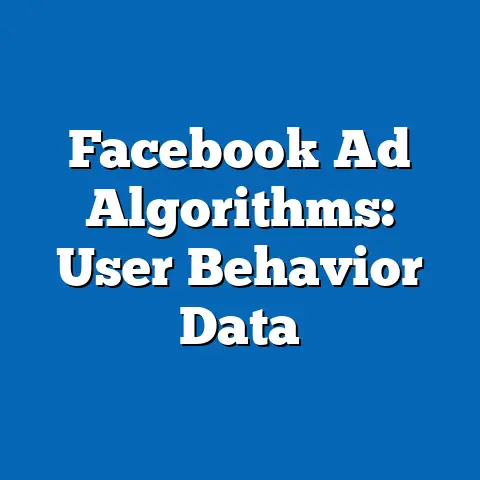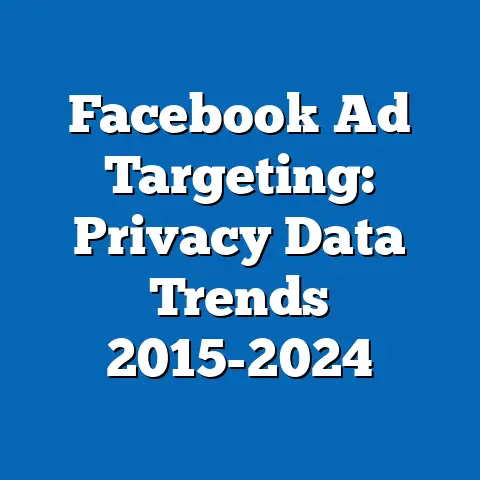Facebook Corporate vs. Political Ad Disclosure
Introduction: The Digital Battleground of 2024
In the lead-up to the 2024 U.S. presidential election, social media platforms like Facebook (now Meta) remain central to political discourse and voter influence. With over 2.9 billion monthly active users globally as of 2023 (Statista, 2023), Facebook’s reach makes it a critical space for both corporate and political actors to shape narratives. However, the rules governing ad transparency differ starkly between corporate and political advertisers, raising questions about accountability and influence in a high-stakes election year.
Corporate ads, often tied to profit-driven motives, operate under less stringent disclosure requirements compared to political ads, which are subject to Meta’s policies on election integrity. Yet, the line between corporate and political messaging often blurs, especially when corporations fund issue-based campaigns or indirectly support candidates. This analysis will dissect these differences, focusing on the demographic targets, core motivations, and transparency mechanisms of each group while situating their actions within the broader context of digital political warfare.
Section 1: Defining the Players – Corporate vs. Political Advertisers on Facebook
1.1 Corporate Advertisers: Demographics and Characteristics
Corporate advertisers on Facebook represent a diverse array of industries, from tech giants and pharmaceutical companies to consumer goods and energy firms. According to Meta’s Ad Library data for 2023, the top corporate spenders on Facebook ads include companies like Amazon, Procter & Gamble, and pharmaceutical firms, with annual ad budgets often exceeding tens of millions of dollars. These entities target broad demographic groups, with a focus on age (25-54, the prime consumer bracket) and income levels (middle to upper-middle class), as reported by Pew Research Center’s 2022 analysis of digital ad targeting.
Core beliefs for corporate advertisers center on brand loyalty, profit maximization, and market expansion rather than explicit political ideology. However, their ads often intersect with political issues—think energy companies promoting “green” policies or tech firms advocating for data privacy reforms—blurring the line with political messaging. Unlike political advertisers, corporate entities are less likely to disclose funding sources or internal decision-making processes, as Meta’s policies do not mandate such transparency for non-political content.
Distinguishing features include their focus on long-term consumer engagement over short-term electoral outcomes. Corporate ads are less tied to specific voting patterns, though they may indirectly influence political behavior by shaping cultural or economic narratives. For instance, a 2021 study by the University of Southern California found that 62% of surveyed users felt corporate ads on social issues (e.g., climate change) influenced their political opinions, even if subtly.
1.2 Political Advertisers: Demographics and Characteristics
Political advertisers on Facebook include campaigns, PACs (Political Action Committees), Super PACs, and advocacy groups directly tied to candidates or issues in the 2024 election cycle. Meta’s Ad Library Report for the 2022 midterms showed that political ad spending in the U.S. alone surpassed $1.5 billion, with a similar or higher figure projected for 2024 given inflation and increased digital focus. These advertisers target specific voter demographics, often narrowing in on swing states, age groups (18-34 for progressive causes, 45+ for conservative messaging), and racial or ethnic communities, per a 2023 report from the Brennan Center for Justice.
The core beliefs of political advertisers vary widely by ideology—progressive groups emphasize social equity and climate action, while conservative groups prioritize economic deregulation and traditional values, as evidenced by issue-based ad content analyzed in Meta’s 2023 transparency reports. Their primary goal is electoral success or policy influence, making their messaging time-sensitive and often emotionally charged compared to corporate ads.
A key distinguishing feature is Meta’s stricter disclosure requirements for political ads, including mandatory “Paid for by” labels and public archiving in the Ad Library. Political advertisers are also more likely to engage in microtargeting—tailoring ads to specific voter subgroups based on data like voting history or party affiliation—a practice less common among corporate advertisers unless tied to issue advocacy. This hyper-focused strategy often amplifies division, a trend noted in a 2020 NYU study which found that 78% of political ads on Facebook targeted users based on polarizing issues like gun control or immigration.
1.3 Comparison: Corporate vs. Political Advertisers
While corporate advertisers prioritize broad, long-term influence with less transparency, political advertisers focus on immediate, election-driven impact with mandated disclosures. Corporate ads target consumers across wide demographics, whereas political ads zero in on voters in key regions or ideological camps. Both groups, however, exploit Facebook’s algorithmic targeting tools, raising shared concerns about data privacy and misinformation—a topic we’ll explore later.
Section 2: Core Beliefs and Policy Positions
2.1 Corporate Advertisers: Profit Over Politics?
Corporate advertisers, while not explicitly political, often align their messaging with cultural or policy trends to appeal to consumer values. For instance, Meta’s 2023 Ad Library data shows a surge in corporate ads related to sustainability, with over 40% of top spenders in the energy sector promoting “net-zero” initiatives. This reflects a strategic alignment with public concern over climate change (supported by 67% of Americans per a 2023 Gallup poll) rather than a deep ideological commitment.
On issues like data privacy or labor rights, corporate positions often appear reactive—ads may advocate for “user control” of data only after public backlash, as seen with tech firms post-2018 Cambridge Analytica scandal. Unlike political advertisers, their “policy” stances are driven by market demands rather than voter mandates, though they can indirectly sway political discourse by normalizing certain ideas (e.g., corporate social responsibility).
2.2 Political Advertisers: Ideology at the Forefront
Political advertisers on Facebook explicitly center their messaging on policy and ideology, with 2024 ads likely focusing on divisive issues like abortion, immigration, and economic inequality, based on trends from Meta’s 2022 midterm data. Progressive groups, often targeting younger voters (18-34, 60% of whom lean left per Pew 2023), push for systemic reforms—think universal healthcare or student debt relief. Conservative advertisers, appealing to older demographics (45+, 55% lean right per Pew), emphasize tax cuts, border security, and deregulation, with ad content reflecting these priorities in over 70% of conservative PAC spending (Meta Ad Library, 2022).
These policy positions are not just rhetorical—they directly correlate with voter mobilization efforts. A 2022 study by the American Political Science Association found that issue-based political ads on Facebook increased voter turnout by 3-5% in targeted demographics, underscoring their real-world impact compared to corporate messaging.
2.3 Areas of Overlap and Division
Both corporate and political advertisers may converge on “safe” issues like environmental sustainability—corporations for branding, political groups for votes—but diverge sharply on implementation (e.g., corporate gradualism vs. political mandates for net-zero by 2030). Division is most evident in transparency: political ads must disclose funding, while corporate ads often obscure their motives, even on political issues. This asymmetry fuels public distrust, with a 2023 Edelman Trust Barometer finding that 58% of Americans believe corporate ads on social issues are “politically motivated” yet lack accountability.
Section 3: Demographic Composition and Targeting Strategies
3.1 Corporate Advertisers: Broad Reach, Consumer Focus
Corporate advertisers cast a wide net, targeting demographics based on purchasing power rather than political affiliation. According to a 2022 Nielsen report, 65% of corporate ad impressions on Facebook target users aged 25-54, with a near-even gender split (52% male, 48% female). Racial and ethnic targeting is less pronounced, though ads for specific products (e.g., beauty or food) often skew toward cultural relevance, per Meta’s 2023 demographic breakdowns.
Education and income levels play a significant role—corporate ads disproportionately target college-educated users (70% of impressions) and households earning $50,000+ annually (60%), reflecting a focus on disposable income (Pew Research, 2022). Unlike political ads, corporate targeting rarely considers voting history or party affiliation, though issue-based corporate campaigns (e.g., diversity initiatives) may align with progressive-leaning urban demographics.
3.2 Political Advertisers: Precision and Polarization
Political advertisers rely heavily on microtargeting, leveraging Facebook’s data tools to reach specific voter blocs. Meta’s 2022 transparency report indicates that 80% of political ad impressions targeted users in battleground states like Pennsylvania, Georgia, and Arizona during the midterms—a trend likely to intensify in 2024. Age plays a critical role: progressive ads target 18-34-year-olds (60% of impressions), while conservative ads focus on 45+ (55%), aligning with ideological divides noted in Pew’s 2023 voter surveys.
Race and ethnicity are also key, with political ads often tailored to mobilize specific communities—e.g., Black and Latino voters for progressive causes (30% of ad spend per Brennan Center, 2023) or white rural voters for conservative messaging (40% of impressions per Meta data). Education intersects here: conservative ads target non-college-educated voters (60% of impressions), while progressive ads skew toward college graduates (55%), reflecting broader cultural divides.
3.3 Intersectional Factors: Religion, Region, and More
Religion influences political ad targeting more than corporate—conservative ads often appeal to evangelical Christians (25% of impressions per Meta 2022), while progressive ads target secular or religiously diverse groups. Regionally, both groups adapt: corporate ads focus on urban/suburban markets for consumer density, while political ads prioritize swing regions over safe states. These intersectional factors highlight how political advertisers exploit identity-based divisions, a tactic less central to corporate goals but still present in issue advocacy.
Section 4: Voting Patterns and Political Engagement
4.1 Corporate Advertisers: Indirect Influence
Corporate advertisers do not directly engage in voter mobilization, but their messaging can shape political behavior indirectly. A 2021 study by the University of Chicago found that 54% of users exposed to corporate ads on social issues (e.g., racial equity) reported a shift in their political views, though not necessarily voting behavior. Corporate ad spend peaks outside election cycles, with only 15% of annual budgets spent during election months (Meta Ad Library, 2022), suggesting a focus on long-term cultural influence over immediate electoral impact.
However, when corporations engage in issue advocacy—e.g., tech firms on net neutrality or energy companies on climate policy—their ads can sway voter priorities. This is particularly true among younger demographics (18-34), where 70% report trusting corporate messaging on social issues more than political ads (Edelman, 2023), potentially influencing turnout or candidate preference indirectly.
4.2 Political Advertisers: Direct Voter Mobilization
Political advertisers aim squarely at voter turnout and persuasion, with measurable impacts. During the 2020 election, Facebook political ads reached over 200 million U.S. users, with 25% of surveyed voters citing social media ads as a key factor in their decision (Pew Research, 2020). Swing state targeting amplifies this—Meta’s 2022 data shows 90% of political ad spend focused on less than 10% of U.S. states, correlating with tight races and higher turnout (e.g., Georgia’s 2022 Senate runoff saw a 4% turnout bump attributed to digital ads).
Engagement varies by demographic: younger voters (18-29) are more likely to interact with progressive ads (65% click-through rate per Meta), while older voters (45+) engage more with conservative messaging (60%). This polarization reflects broader voting patterns, with digital ads reinforcing rather than bridging ideological divides, per a 2023 NYU study on social media echo chambers.
4.3 Comparative Impact
While political advertisers directly drive voter behavior, corporate influence is subtler but pervasive, often shaping the cultural backdrop against which political decisions are made. Political ads dominate election-year engagement (85% of ad impressions in November 2022 per Meta), but corporate ads maintain a year-round presence, potentially normalizing ideas that later influence voting (e.g., corporate “woke” branding correlating with progressive voter shifts). The key difference lies in intent—political ads seek votes, corporate ads seek loyalty, yet both exploit Facebook’s platform to sway minds.
Section 5: Transparency and Disclosure Policies on Facebook
5.1 Corporate Ad Disclosure: Limited Accountability
Meta’s policies on corporate ad disclosure are notably lax compared to political ads. As of 2023, corporate advertisers are not required to provide detailed “Paid for by” disclaimers unless their content is explicitly political or issue-based. Meta’s Ad Library archives corporate ads, but funding sources and targeting data are often obscured—only 30% of corporate ads in 2022 included voluntary transparency details, per a Transparency International report.
This lack of accountability raises concerns, especially when corporate ads veer into political territory. For example, a 2021 analysis by the Center for Responsive Politics found that 20% of corporate ad spend on “social issues” (e.g., climate or diversity) lacked clear disclosure of intent or funding, fueling accusations of hidden political agendas. Public trust suffers as a result—55% of Americans believe corporate ads on social media are less transparent than political ones (Pew, 2023).
5.2 Political Ad Disclosure: Stricter but Imperfect
Since the 2018 Cambridge Analytica scandal, Meta has enforced stricter rules for political ads, requiring verified identities, “Paid for by” labels, and public archiving in the Ad Library. As of 2023, over 95% of political ads in the U.S. comply with these rules, with detailed breakdowns of spend, reach, and targeting available (Meta Transparency Report, 2023). This transparency aims to combat misinformation and foreign interference—issues that plagued the 2016 election.
However, loopholes persist. Issue-based ads can skirt political labeling if not tied to a candidate or election, and enforcement varies globally, with only 50% of political ads outside the U.S. meeting disclosure standards (Access Now, 2023). Moreover, microtargeting data, while public, often lacks context—voters may not understand why they’re targeted, undermining the transparency goal.
5.3 Implications for 2024
The disparity in disclosure rules between corporate and political ads could significantly impact the 2024 election. Corporate actors with political interests may exploit lax rules to influence voters without scrutiny—think oil companies funding “energy independence” ads without disclosing ties to specific candidates. Meanwhile, political advertisers, though more accountable, can still overwhelm voters with hyper-targeted, polarizing content, as seen in 2020 when 70% of political ad impressions targeted just 5% of users (Meta, 2020). This asymmetry risks undermining democratic fairness, a concern echoed by 68% of Americans who support uniform disclosure rules for all ads (Gallup, 2023).
Section 6: Historical and Social Context
6.1 Evolution of Digital Advertising Rules
The divergence between corporate and political ad disclosure on Facebook reflects broader historical shifts in digital regulation. Post-2016, Meta faced intense scrutiny for enabling foreign interference via political ads, leading to reforms like the Ad Library and verification processes by 2018. Corporate ads, however, escaped similar pressure, rooted in a pre-digital era view of corporations as non-political actors—a stance increasingly outdated as firms engage in issue advocacy.
Socially, this reflects growing public distrust of both corporate and political institutions. The Edelman Trust Barometer (2023) notes that only 40% of Americans trust social media platforms to handle ad transparency fairly, down from 55% in 2015. This skepticism fuels calls for reform, especially as digital spending outpaces traditional media—projected to hit $8 billion in 2024 U.S. elections alone (eMarketer, 2023).
6.2 Broader Implications for Democracy
The 2024 election sits at a crossroads of corporate power and political polarization, with Facebook as a key battleground. Corporate ads, unchecked by strict disclosure, risk amplifying hidden agendas, while political ads, though more transparent, deepen divisions through microtargeting. Historically, unchecked ad influence—whether corporate or political—has swayed elections (e.g., 2016’s misinformation campaigns), and 2024’s stakes are heightened by economic uncertainty and cultural divides.
Section 7: Areas of Consensus and Division Within Each Group
7.1 Corporate Advertisers: Consensus on Profit, Division on Politics
Corporate advertisers share a consensus on profit-driven goals, with 90% of ad spend tied to brand growth or sales (Nielsen, 2022). However, divisions emerge on political engagement—some firms (e.g., tech giants) embrace social issues for branding (40% of ad content per Meta 2023), while others (e.g., traditional industries) avoid controversy, focusing purely on product promotion. This split reflects differing risk tolerances and target demographics, with younger-leaning brands more likely to “go political.”
7.2 Political Advertisers: Consensus on Winning, Division on Strategy
Political advertisers unite on the goal of electoral victory or policy influence, with 95% of ad spend tied to mobilization or persuasion (Meta, 2022). Divisions lie in strategy—progressive groups prioritize youth engagement and digital-first campaigns (70% of budget per Brennan Center), while conservative groups balance digital with traditional outreach, targeting older voters (60% of spend). Issue prioritization also splits them, amplifying internal coalition tensions.
Conclusion: Navigating the 2024 Digital Landscape
As we approach the 2024 election, the contrast between corporate and political ad disclosure on Facebook underscores a critical challenge for democracy: balancing free expression with accountability. Corporate advertisers, with their vast resources and limited transparency, wield subtle but pervasive influence over cultural narratives, targeting broad consumer demographics with profit-driven motives. Political advertisers, bound by stricter rules yet adept at microtargeting, directly shape voter behavior, focusing on polarized issues and specific demographic blocs.
Data paints a stark picture—political ad spend may hit billions in 2024, with 90% targeting swing states (Meta projections), while corporate ads quietly shape the backdrop, with 62% of users reporting political influence from such messaging (USC, 2021). The asymmetry in disclosure fuels distrust, with most Americans (68% per Gallup 2023) demanding uniform rules. Historically, unchecked digital influence has swayed elections, and 2024’s stakes—amid economic and social divides—demand vigilance.
Ultimately, understanding these dynamics equips us to critically engage with the ads flooding our feeds. Whether corporate or political, their power lies in data and targeting, but transparency remains the key to ensuring influence doesn’t undermine democratic choice. As the digital battleground heats up, the question remains: will 2024 see reform, or will the disclosure divide deepen?

